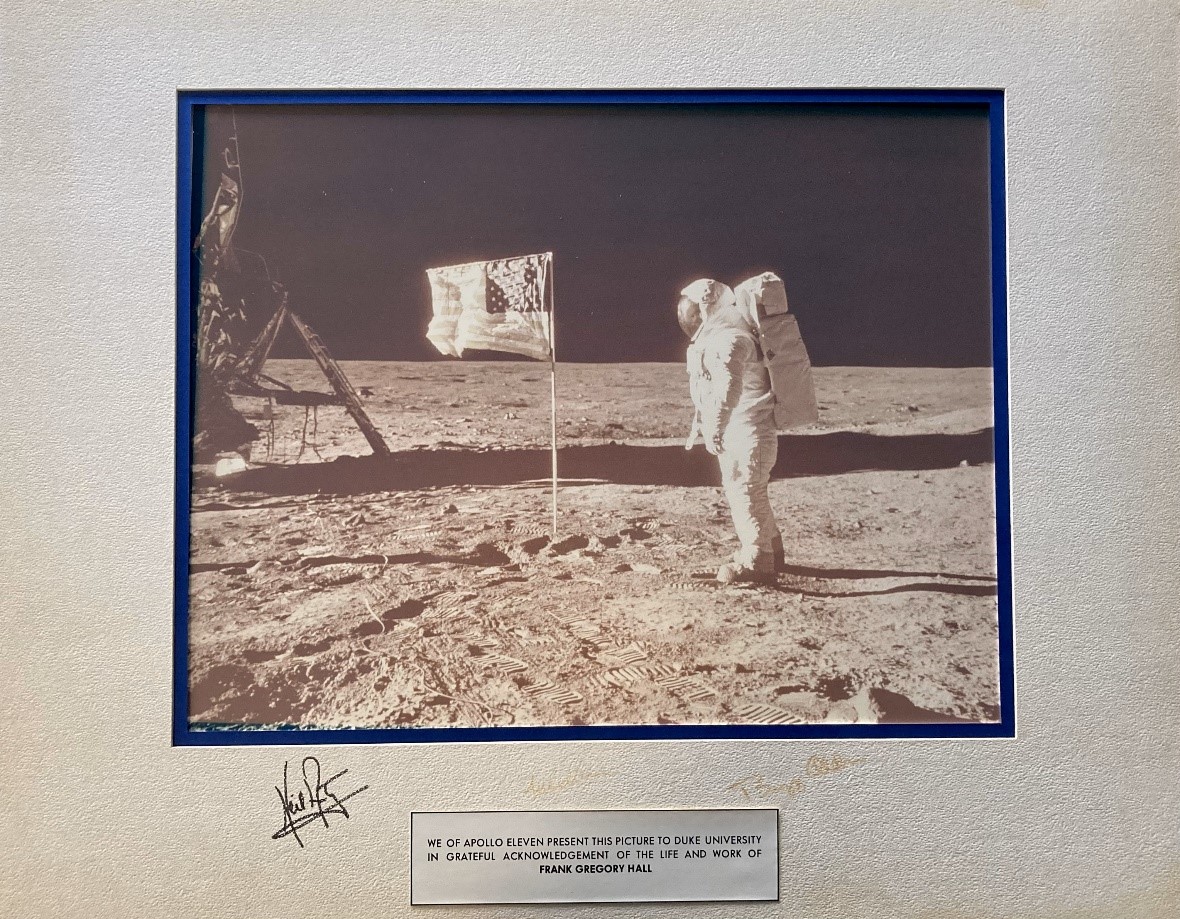This is Part 2 of a multi part series on the Duke Center for Hyperbaric Medicine & Environmental Physiology (CHMEP) and the records held documenting CHMEP at the Medical Center Archives.
Part 1 “Duke Center for Hyperbaric Medicine & Environmental Physiology”, gives a brief history of the Duke Center for Hyperbaric Medicine & Environmental Physiology (CHMEP).
This piece highlights the working relationship between CHMEP and the National Aeronautics and Space Administration (NASA) during the Apollo Missions in the 1960s and 1970s.
During the Cold War, the United States and the Soviet Union, the two super powers to emerge after World War II, competed for supremacy in all areas across the globe, into the atmosphere, and beyond. During the Space Race (1955-1975), each country raced to see who would be the first to demonstrate their superiority through rocketry and spaceflight. The Space Race drove many technological advances during this period of time.
In 1961, President John F. Kennedy issued a challenge to land a person safely on the Moon by the end of the 1960s.
I believe that this nation should commit itself to achieving the goal, before this decade is out, of landing a man on the Moon and returning him safely to the Earth. No single space project...will be more exciting, or more impressive to mankind, or more important...and none will be so difficult or expensive to accomplish...." (President John F. Kennedy, 1961)
The result of this challenge was the creation of the Apollo Program (1961-1972) by NASA with the goal of landing astronauts on the moon and safely bringing them home by the end of the 1960s. Between 1961 and 1972, there were 17 Apollo missions. Apollo 11 was the first mission to achieve a Moon landing on July 20, 1969. The mission was crewed by Neil Armstrong, Michael Collins, and Edwin “Buzz” Aldrin. The last Apollo Mission, Apollo 17 in December 1972, was the sixth mission to land people on the Moon and traversed the greatest distance using the Lunar Rover Vehicle, returning the greatest number of rock and soil samples of all the missions.
The CHMEP has a long history of collaboration with NASA. The physiologist the laboratory is named after, Frank Gregory Hall, contributed to the development of the pressure suits NASA astronauts use today. The Duke Center for Hyperbaric Medicine and Environmental Physiology Records contains records pertaining to the Center’s work with NASA on the Apollo Missions. The bulk of the materials are lantern slides depicting the Moon landing, technical drawings of space illustrations and equipment, and testing results. In addition to the lantern slides there is also a signed photograph by the astronauts of the Apollo 11 mission.
To view materials from the Duke Center for Hyperbaric Medicine and Environmental Physiology collection, contact the Medical Center Archives staff or visit the finding aid.

References
“The Apollo Missions.” National Air and Space Museum.
“Creation of the Center for Hyperbaric Medicine & Environmental Physiology.” Duke Center for Hyperbaric Medicine and Environmental Physiology.
“The Space Race.” National Air and Space Museum.
This blog post was contributed by Medical Center Archives Assistant Director Lucy Waldrop.

